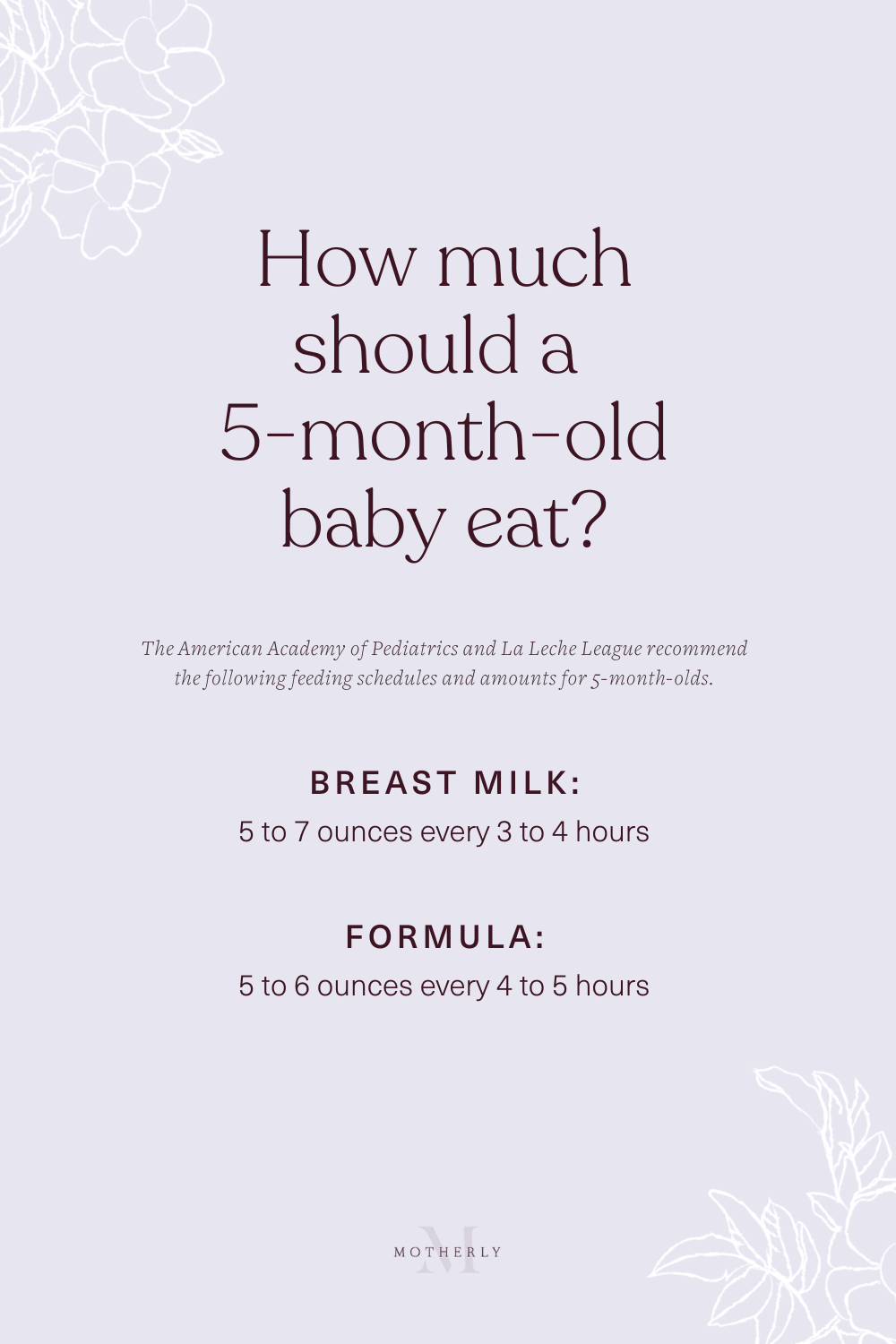5-month-old baby feeding schedule & expert advice

By now, you're a pro when it comes to feeding your baby.
Table of Contents
For whatever reason, many people like to weigh in on infant feeding choices—especially around this time when solid foods or cereals are about to be in the mix. Here’s the thing, though: You know your baby best. Although it’s “just” 5 months (a blink of an eye in the long run!), you are already a pro when it comes to breastfeeding, offering formula, pumping or combination feeding your 5-month-old baby.
Related: 5-month-old baby milestones
How much should a 5-month-old eat?
The American Academy of Pediatrics and La Leche League recommend the following feeding schedules and amounts for 5-month-olds.
Breast milk: 5 to 7 ounces every 3 to 4 hours
Formula: 5 to 6 ounces every 4 to 5 hours. The American Academy of Pediatrics (AAP) also recommends that parents should follow the responsive feeding method, also known as feeding on demand, which looks to the infant’s hunger cues for when to feed. The schedules below are just examples—be sure to follow your baby’s hunger signals to know when your little one is ready for the next feeding. As babies get older, their hunger cues and feeding times start to become a little more predictable.
Related: Baby gut health is a powerful tool when it comes to allergies and eczema
What’s a good 5-month-old feeding schedule?

Remember, it’s more important that you follow your baby’s cues than adhere to a set schedule, so schedules outlined are general guides of how frequently you’ll feed your baby—not hard-and-fast rules.
These guidelines also apply primarily to infants born full-term and without any underlying medical conditions. For preterm infants, babies with certain medical conditions or for any specific questions pertaining to your child, be sure to consult your child’s pediatrician for a more customized feeding schedule.
Related: How much sleep does a 5-month-old baby need?
Can you give infant cereals to a 5-month-old baby?
With a 5-month-old baby, one of the most common questions you hear is “have you offered cereal yet?” There is a long-held notion that infant cereals can help babies sleep better at night, but studies have not found a link between sleep duration and cereal intake. Although some parents will opt to introduce cereals this month for a variety of reasons, the AAP endorses sticking with exclusively breastfeeding or offering formula until 6 months. If you do offer cereal, it’s also worth noting that the CDC recommends offering a variety of fortified infant cereals (like oat, barley and multi-grain) rather than rice cereal due to concerns about arsenic exposure.
Related: Activities for a 5-month-old
A note from Motherly on feeding a 5-month-old
That’s parenthood in a nutshell: You’ve got to do what’s right for your child and your family. It will be time to introduce solids before you know it (at 6 months)—and that’s definitely something to celebrate. Until then, try to enjoy the pleasant patterns you’ve established with breastfeeding, formula-feeding, pumping or combo-feeding.
Look ahead: 6-month-old baby feeding schedule & expert advice
A version of this story was published October 17, 2021. It has been updated.


































